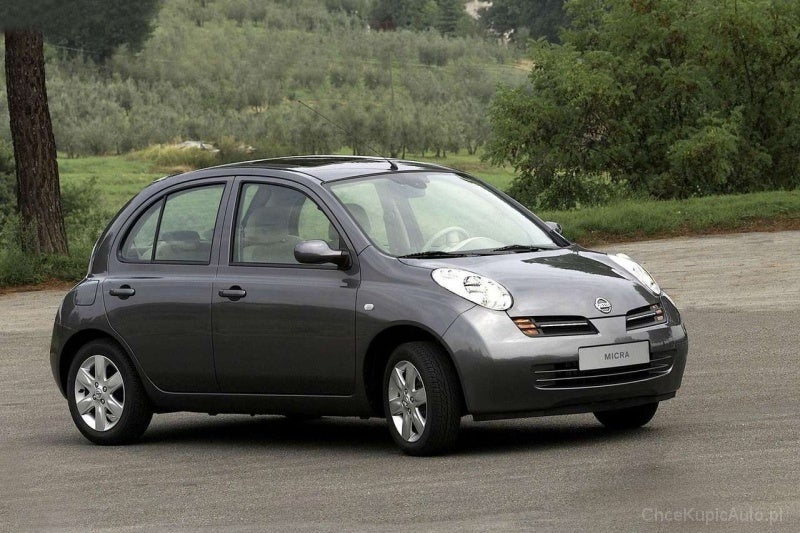 by "Cé hé sin" (michael-m-mouse)
by "Cé hé sin" (michael-m-mouse)
Published 12/02/2017 at 16:08
 by "Cé hé sin" (michael-m-mouse)
by "Cé hé sin" (michael-m-mouse)
Published 12/02/2017 at 16:08
Tags: TGV
; Nissan Micra
STARS: 1
A post in which we learn of power, weight, aerodynamics and rolling resistance.
In the course of this month, I hope to have travelled in two very different vehicles.
Here’s one.

It’s a 1.2l K12 Nissan Micra. It has 80 bhp and fortuitously weighs almost exactly a tonne so we can easily calculate that it has 80 bhp/tonne to play with.
Here’s the other.

It’s a TGV train, pictured at the Gare de l’Est in Paris which is just where I hope to pick it up. It has 12,900 bhp, which is a lot but then it weighs about 383 tonnes so 34 bhp/tonne. Incidentally, it would take about four diesel locos to give this much power at the wheels and that wouldn’t be near enough to match it performance-wise because they’re much heavier (I must work out sometime just how many you’d need) EDIT: You couldn’t practically use diesels and get the same performance.
Now rhere’s the thing. The train runs at up to 300 kmh and could manage 320 where allowed. The Micra, with more than twice the power per tonne, can barely manage half of this speed. If you could get the Micra up to 300 with less than 400 bhp I’d be surprised.
What do we conclude? A small frontal area in relation to the overall size of the vehicle plus lower rolling resistance can do an awful lot for performance.
 "BiTurbo228 - Dr Frankenstein of Spitfires" (biturbo228)
"BiTurbo228 - Dr Frankenstein of Spitfires" (biturbo228)
12/02/2017 at 17:49, STARS: 5
While bored at work I actually did the maths for this. You can calculate estimated top speeds using power, weight, Cd and frontal area. In the formula, it’s clear to see that weight has a practically negligible effect on top speed. An additional 1000kg for most average-powered cars affects the top speed by less than a mile per hour.
Another thing I did when I was bored is do a little spreadsheet for a whole host of cars’ power-to-weight (~1800 cars). I then expanded it to include Cd, frontal area and power-to-drag, and an additional power-to-weight-to-drag number.
So now I can compare a couple of different parameters for different cars :) power-to-weight has most effect up to about 60mph, and above that it starts to transition to power-to-drag being the most important figure.
What did we learn from this?
My work is boring. That’s what we learnt ;)
 "Rusty Vandura - www.tinyurl.com/keepoppo" (rustyvandura)
"Rusty Vandura - www.tinyurl.com/keepoppo" (rustyvandura)
12/02/2017 at 18:36, STARS: 0
But electric versus internal combustion/mechanical?
 "Cé hé sin" (michael-m-mouse)
"Cé hé sin" (michael-m-mouse)
12/02/2017 at 19:15, STARS: 1
True, an 80 hp Micra won’t get 80 bhp to the wheels, but it’ll get most of it there. So far as I know the power of the TGV is actually quoted as at the wheels.
I’m told that at higher speeds drag plays a much more important part than power/weight which is where the pencil-shaped train comes in.
 "Cé hé sin" (michael-m-mouse)
"Cé hé sin" (michael-m-mouse)
12/02/2017 at 19:31, STARS: 1
One other point though: weight will have a small impact on Vmax, but it’ll have a big impact on how long it takes to get there. Another reason why high speed diesel trains aren’t a thing. They can do fast, but not getting fast quickly.
I did five minutes of research. An electric loco weighs about 80 tonnes and will typically have 6.4MW of thereabouts. A Siemens diesel electric loco has 2.4MW at the flywheel and quite a bit less at the wheels because of the losses in going from rotation to electricity and back again so you’ll need three to match the single electric - but they’re also 80 tonnes each so now you’ve added 160 tonnes so you’ll need more again to restore your power to weight ratio to something like what it used to be. More powerful locos exist but they’re heavier again and meeting emissions regs while keeping the size within limits is getting problematic.